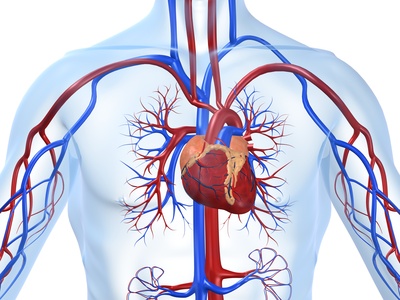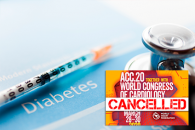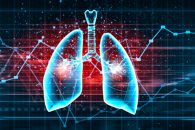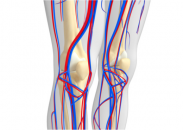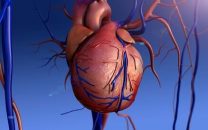Risk factors for pulmonary embolism (PE) among patients with the new coronavirus are different from those traditionally observed. A French study recently published in Eur Heart J showed those new risk factors, and also that the risk of PE is reduced by the use of anticoagulant agents, just like in patients with conventional risk factors.…
Blood Pressure Variability and Subclinical Brain Disease
Elevated blood pressure variability was associated with a wide range of subclinical structural changes in the brain. These structural changes could be the mechanisms explaining a higher incidence of dementia and stroke. This study included 2348 participants age ≥55 years in a prospective cohort. Blood pressure was measured in each visit since 1990, and since 2005 all…
Virtual ACC 2020 | COMPASS Sub-Analysis: Diabetes Increases the Benefit of Rivaroxaban Combined with AAS
In patients with stable coronary or peripheral artery disease, diabetes increases the benefit of combining low doses of rivaroxaban and aspirin vs. aspirin alone. This analysis was pre-specified in the COMPASS protocol and was presented virtually for the ACC 2020 and simultaneously published in Circulation. Patients with diabetes, showed numerically greater reduction in terms of…
What to Do and What Not to Do in Case of PE According to the New European Guidelines
As a “friendly,” easy-to-read document, the new European guidelines on pulmonary embolism (PE) include an excellent summary chart with new and modified items (compared with the 2014 guidelines), and also some sort of final conclusion composed of crucial tips and contraindications that come in handy in case of emergency. Diagnosis stage In suspected high-risk PE,…
New European Guidelines on the Management of Lower Limb Acute Ischemia
Clinical practice guidelines are usually tedious and, frankly, while a lot of people make an enormous effort to write them, they are ultimately read in full by just a few. These new European Guidelines on the Management of Lower Limb Acute Ischemia represent a special team effort, since they include physicians, cardiologists, surgeons, and interventionists,…
Consensus on How to Conduct Follow-Up in Peripheral Vascular Disease
Peripheral vascular disease involves multiple areas and, therefore, can have very different presentations (from complete lack of symptoms to disabling symptoms). Depending on clinical presentation, general condition, anatomical localization, and lesion extension, revascularization can be indicated alongside optimal medical treatment. In 2017, guidelines with indications for revascularization were published; however, maintaining long-term patency can be…
Should Interventional Cardiologists Be Involved in Acute Stroke?
According to this single-site study, published in J Am Coll Cardiol Intv., interventional cardiologists can safely conduct revascularizations in a setting of acute stroke, with high clinical and technical success. Cardiologists are taking on this traditional interventional neurology field simply due to the lack of interventional neurologists, who are thus unable to provide coverage 24/7,…
Permanent Carotid Coil Filters in Patients with Atrial Fibrillation
This new strategy to reduce the risk of stroke in patients with atrial fibrillation is technically feasible and safe, even though long-term outcomes are yet to be seen and despite the evidence available, for instance, left atrial appendage closure devices. It is true that they could be used simultaneously, but its synergy and cost have…
MR CLEAN Registry: “Time is Brain” is a Far More Accurate than “Time is Heart”
Time to endovascular treatment after ischemic stroke is strongly associated to functional outcomes. This association could be even stronger than previously suggested in more select populations of controlled studies. These findings emphasize that functional outcomes after endovascular treatment could be improved significantly by reducing onset to treatment times. Randomized studies in select acute…
TCT 2018 | PADN-5: Pulmonary Artery Denervation in Pre- and Post-Capillary Pulmonary Hypertension
This work included 98 patients with pre- and post-capillary pulmonary hypertension defined as mean pulmonary arterial pressures ≥25 mmHg, pulmonary capillary wedge pressures >15 mmHg, and pulmonary vascular resistance >3.0 Wood units. These subjects were randomized to pulmonary artery denervation vs. sildenafil plus sham pulmonary artery denervation. The medical treatment for heart failure was administered to all patients. The…
HIV and Peripheral Artery Disease: Acknowledging the Association
The role of human immunodeficiency virus (HIV) in the development of vascular disease (specifically peripheral artery disease) remains unclear. Is the virus per se the direct cause of this disease or is it a consequence of dyslipidemia, one of the adverse effects of antiretrovirals? This study looked into the effect of HIV infection on peripheral…
